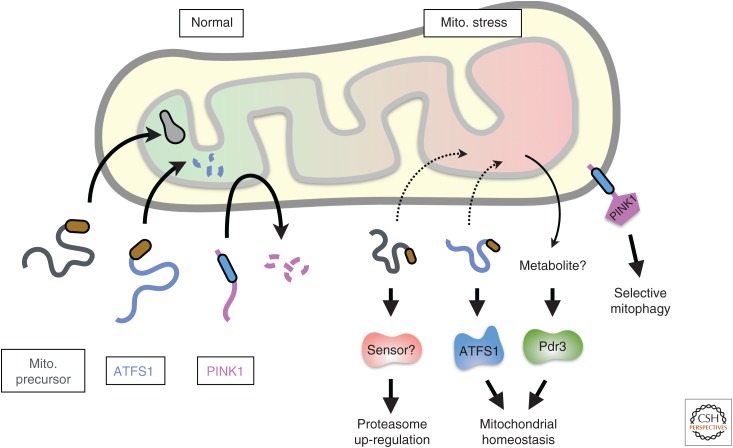Figure 3.
Protein mislocalization and signaling during mito. (mitochondrial) stress. Depicted are the fates of several mitochondrial precursors during normal conditions (left) and acute stress (right). Failed import during acute stress results in (presumably misfolded) mitochondrial precursors in the cytosol that can trigger proteasomal up-regulation by a mechanism that is incompletely understood (Wrobel et al. 2015). In special cases, the nonimported precursor is not degraded selectively during mitochondrial stress and can signal downstream responses. This is the case for ATFS1, which can act as a transcription factor to up-regulate genes that improve mitochondrial homeostasis (Nargund et al. 2012). PINK1 is normally imported into the inner membrane where its cleavage permits retrotranslocation to the cytosol for degradation. During acute stress, PINK1 import to the inner membrane is aborted, allowing its insertion into the mitochondrial outer membrane where it initiates a series of events leading to mitochondrial autophagy (Sekine and Youle 2018). Pdr3 is also activated during certain types of mitochondrial stress (Weidberg and Amon 2018), although the signal for activation, perhaps a mitochondrial metabolite, is not known.

